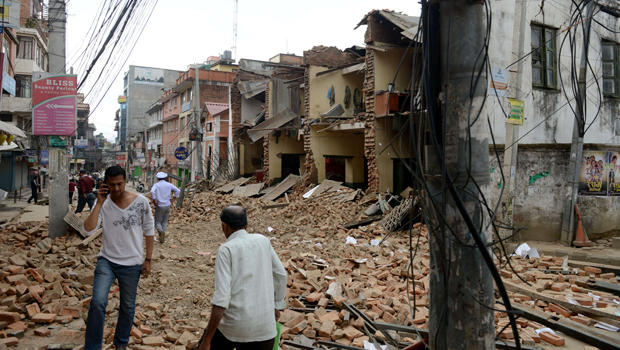Yesterday at 11.56 am Nepal witnessed the deadliest tremor in centuries which scaled 7.5 Richter scale. The effect was felt in all the districts of Nepal.
The death toll so far has has reached 2000 till Sunday morning and still bodies are being recovered under debris.
The quake has damaged massive loss of property and houses. At least 7,00,000 lakh houses are fully or partially damaged. While most modern buildings remained standing after the quake, it brought down several buildings in the center of the capital as well as centuries-old temples and towers. Among them was the nine-story Dharahara Tower, a Kathmandu landmark built by Nepal’s royal rulers as a watchtower in the 1800s and a UNESCO-recognised historical monument. It was reduced to rubble and there were reports of people trapped underneath.
The Kathmandu Valley is listed as a World Heritage site. The Buddhist stupas, public squares and Hindu temples are some of the most well-known sites in Kathmandu, and now some of the most deeply mourned. Nepali journalist and author Shiwani Neupane tweeted: “The sadness is sinking in. We have lost our temples, our history, the places we grew up.”
India was quick to respond with relief materials being sent in Army helicopters. About 300 doctors are attending the injured. PM Modi has taken self initiative to help Nepal in this disastrous moment. Relief ametrails from other countries have already started pouring in the country. The United States and the European Union were among those to pledge assistance to the government of Nepal, as messages of support poured in from world leaders including China’s Xi Jinping, France’s Francois Hollande, Germany’s Angela Merkel and Russia’s Vladimir Putin.
The US is sending a disaster response team and has authorised an initial $1 million in aid to address immediate needs, the US Agency for International Development said. The European Union also said its humanitarian experts were heading to the crisis areas.
Nepal’s devastating earthquake was the disaster experts knew was coming.
Just a week ago, about 50 earthquake and social scientists from around the world came to Kathmandu, Nepal, to figure out how to get this poor, congested, overdeveloped, shoddily built area to prepare better for the big one, a repeat of the 1934 temblor that leveled this city. They knew they were racing the clock, but they didn’t know when what they feared would strike.
“It was sort of a nightmare waiting to happen,” said seismologist James Jackson, head of the earth sciences department at the University of Cambridge in England. “Physically and geologically what happened is exactly what we thought would happen.”
But he didn’t expect the massive quake that struck Saturday to happen so soon. The magnitude 7.8 earthquake killed nearly 1,400 and counting and caused widespread destruction.
“I was walking through that very area where that earthquake was and I thought at the very time that the area was heading for trouble,” said Jackson, lead scientist for Earthquakes Without Frontiers, a group that tries to make Asia more able to bounce back from these disasters and was having the meeting.
Hospitals across the impoverished nation of 28 million people struggled to cope with the dead and injured from Nepal’s worst quake in 81 years, and a lack of equipment meant rescuers could look no deeper than surface rubble for signs of life.
Ramesh Pokharel, a staff member of the Bhaktapur Hospital on the outskirts of Kathmandu, said that around 50 bodies were lying in a field outside.
Doctors were treating patients in a makeshift tent next to the main building, and staff were too busy to count or register names of the casualties.








